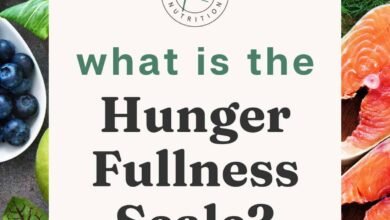What Is the 75 Hard Challenge… And Is It Safe?

What is the 75 Hard Challenge exactly, and do wellness experts give it the green light or a hard pass? Here’s what you should know about the viral fitness and diet trend—including how to modify it for safety and sustainability.
If you’re on TikTok and have ever viewed footage related to health, chances are high that you’ve been served at least one video about the 75 Hard Challenge. As of early March 2023, #75Hard and #75HardChallenge collectively had over 2.4 billion views on TikTok alone.
But if you break one rule on this “mental toughness challenge,” you have to start back at square one. A lot of us pursue certain things in life specifically because they allow us to hit the “easy button” in one way or another… so why are millions of people signing up to spend months going hard?
From keto to Whole30 to juice cleanses, weight loss and diet trends are nothing new. But according to health experts we spoke to, 75 Hard is among the strictest of them all and requires some serious sacrifices.
Ahead, discover the rules of the 75 Hard Challenge and what a dietitian and a trainer really think of the viral trend. Plus: their proposals for a healthier, safer, and more sustainable version of 75 Hard.
What Is the 75 Hard Challenge?
According to Andy Frisella—a YouTuber, podcaster, and entrepreneur—the 75 Hard program he launched in March 2019 is actually not a fitness program. Instead, he bills it as a “TRANSFORMATIVE MENTAL TOUGHNESS PROGRAM.” Frisella promises that this “Ironman for your brain” will “100x” traits like confidence, self-esteem, self-worth, fortitude, and grit.
As for Frisella himself, he’s not a registered dietitian, certified personal trainer, or licensed mental health practitioner, but claims that he’s qualified to lead others through this program after his “20 years of intensive study and real-life experience.” He doesn’t cite any research to back up his motivation behind the 75 Hard rules. Instead, he touts reviews from those who have posted glowing reviews about the program.
75 Hard Challenge Rules
Deemed by Frisella as “critical” daily tasks, the rules of the 75 Hard Challenge include the following, which must be performed daily for all 75 days:
- Follow any nutrition plan and stick to it; no cheat meals and no alcohol.
- Do two 45-minute workouts; at least one needs to be performed outside.
- Drink a gallon of water (128 ounces).
- Read 10 pages of a self-improvement non-fiction book.
- Take a progress picture.
If challengers miss checking any of these boxes on any given day, they must start over at day one.
WHat Experts Want You to Know Before Trying 75 Hard
Some of the basic concepts behind the 75 Hard Challenge are driven by some healthy practices in theory, says Katie Kollath, CPT, personal trainer and co-founder of Barpath Fitness in Golden, Colorado. But there are several potential red flags worth pointing out.
It’s Very Strict
To start, Kollath champions the basic tenets of moving more, increasing water intake, and abstaining from alcohol. “These are generally great strategies for everyone to implement as a habitual part of your day to day routine to improve your health,” she says, “but the strictness of these goals is not sustainable or realistic for the average person.”
The routine aspect can be beneficial for those seeking to make behavior changes, adds Molly Bremer, RD, a dietitian with Mind Body Health in Washington, DC and Northern Virginia. “I think that having a routine with eating enough meals and snacks, engaging in movement, and reading for fun can be helpful,” Bremer says. However, she’s not so fond of how unrelenting the rules are: “General structure and routine with flexibility is helpful, but I would advise against having such strict rules.”
Its Benchmarks for Success Could Be Problematic
Rather than asking participants to take note of how they feel throughout the two-and-a-half month challenge, or prompting them to track their energy levels or even health biometrics (like blood pressure or cholesterol), 75 Hard focuses on external measures of success. “The emphasis on progress photos and strict adherence to the rules can shift the focus away from internal measures of success and create a preoccupation with appearance and external validation,” Kollath believes.
Our bodies are biologically supposed to fluctuate day to day, Bremer adds—and this is a normal part of being human. Even if the rule were to take photos every week, progress pictures can “easily be manipulated depending on the angle, lighting, time of day, and [your] hydration status,” she notes.
And research backs this up: Both in terms of weight loss and exercise adherence, two separate studies published in the International Journal of Behavioral Nutrition and Physical Activity found that intrinsic motivators—such as having a clear “why” (“I want to lose 10 pounds so it’s easier and more fun to play on the playground with my kids”)—stick to the program and find more success.
It Poses a Risk for Burnout
Since 75 Hard is so rigid (well, aside from the lack of specificity about the specific diet or exercise regimen to follow), “The challenge also poses a huge risk for burnout, which means the people participating will most likely not stick with most or even any of these habits after the 75 days,” Kollath says.
Yes, the diet and exercise categories leave some room for you to choose your own adventure in terms of the exact mode of workout and eating program. “But the bottom line is that even Olympians take rest days from exercise, and diets don’t work,” Bremer says.
It’s Unlikely to Spur Healthy Weight Loss
Only about 20 percent of those who embark on a specific diet plan are able to maintain any weight loss, according to research in The American Journal of Clinical Nutrition. (And that’s one of the rosier views in the weight-loss research landscape. Some studies have reported that stat to be as low as 5 percent.)
Plus, dieting can be dangerous. A study involving 14- and 15-year-olds published in the journal Pediatrics found that those who had dieted were five times more likely to develop an eating disorder later in life, and if that diet was extremely restrictive, that rate skyrocketed to 18 times more likely than their peers who didn’t diet.
It’s Not a Long-Term Solution
Overall, “75 Hard is yet another diet trend that has been repackaged and branded as a ‘lifestyle change,’” Bremer says. “I simply have no faith that these rules work as a way to make sustainable changes like being in the ‘best physical shape of your life,’ making ‘huge strides in your career,’ and developing ‘amazing relationships’ like the website suggests.”
Even if you accomplish any or all of those things, she says, what happens on day 76? 107? 365? There’s no guidance about where to take things from there, Bremer warns.

Could There Be a “Healthier” 75 Hard Challenge?
While you should always do what feels best for your body and what aligns with your values, time, budget, and overall goals, you could use Frisella’s critical daily tasks as a jumping off point for a DIY wellness reboot.
With that said, we asked Bremer and Kollath to help us rewrite the rules that could make for a healthier, more sustainable version of the 75 Hard Challenge.
Rule 1
- Before: Follow any nutrition plan and stick to it; no cheat meals and no alcohol.
- After: Eat whole foods intuitively most of the time, and enjoy alcohol in moderation.
“Food is more than fuel! Food is culture, joy, connection, expression—so many things! Focusing on our relationship to food is more important than what we are eating,” Bremer says. A severely restrictive routine can not only be isolating, but it might also put you at risk for developing disordered eating patterns.
“If we develop a more positive, flexible, and intuitive relationship with food with gentle nutrition principles, that will be the most impactful long-term solution. Our bodies are smarter than any food rules we can come up with.”
Rule 2
- Before: Do two 45-minute workouts; at least one needs to be performed outside.
- After: Strength train three times per week and aim for 7,000 steps per day.
Joyful movement can exist. We should move our bodies because we value our bodies—not because we hate them, Bremer says. Find a way of moving your body–inside or outside, gently or intensely–that works for you. While Kollath’s strength and step goals are good to aim for in terms of supporting lifelong strength and well-being, listen to your body. If it’s giving you signals that it needs to rest, be sure to honor that.
Rule 3
Each individual has different hydration needs based on factors such as age, sex, and activity levels. Drink H2O when you’re thirsty and with meals and snacks, and monitor your urine for a rough guide of how hydrated you are. Adjust accordingly based on your thirst or any specific recommendations you’ve received from your doctor or dietitian.

Rule 4
- Before: Read 10 pages of a self-improvement non-fiction book.
- After: Read or listen to any book, stream a podcast, journal, meditate, or take 10 minutes for another form of self-care each day.
Your aim is to integrate anything that feels like it’s doing more good for your life. That might sound less directly related to health outcomes than the rest of the items on this list, but the National Institute of Mental Health confirms that even short bouts of regular self-care can help with stress management while lowering risk for several chronic illnesses and increasing energy levels.
Rule 5
- Before: Take a progress picture.
- After: Take mental notes of your energy levels and attitude.
Snapping daily photos or weighing in daily (or even weekly) “often causes more harm than good,” Bremer warns. Instead, consider how you feel as the result of the other four changes and about your overall self-growth regardless of the program.
The Takeaway
The 75 Hard Challenge is a viral trend involving strict rules that are promoted as benefiting mental, physical, and emotional strength. While you’ll likely feel accomplished if you can stick to it for the entire 75 days, chances are you’ll be exhausted and potentially unsure of how to proceed on day 76.
Also note that the challenge wasn’t exactly designed with sustainability in mind, nor is it safe for specific groups of people, Bremer and Kollath caution. Those who are pregnant or breastfeeding—as well as individuals with a history of eating disorders, obsessive compulsive disorder, or chronic health conditions (such as autoimmune disorders or chronic pain)—should steer clear of 75 Hard. If you do choose to opt into the challenge, be sure to consult your medical care team first.
Source link
#Hard #Challenge.. #Safe



